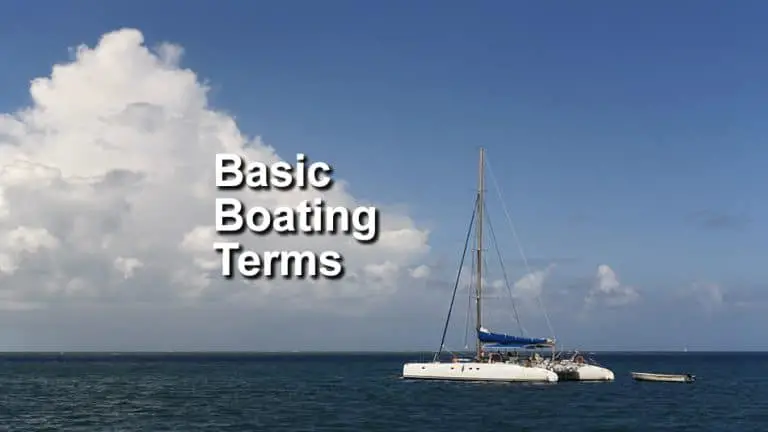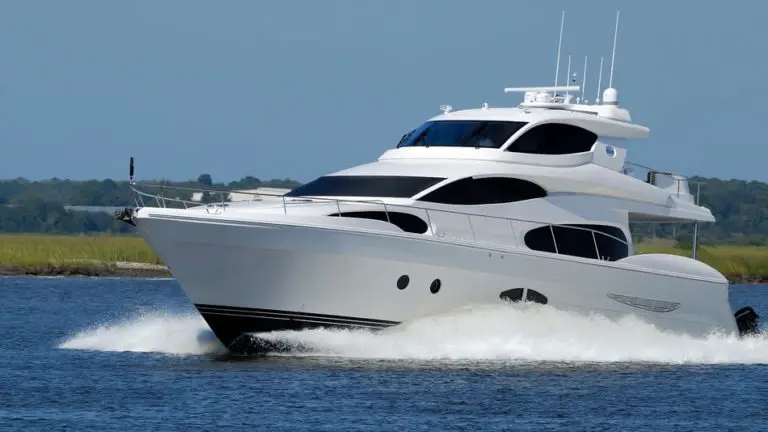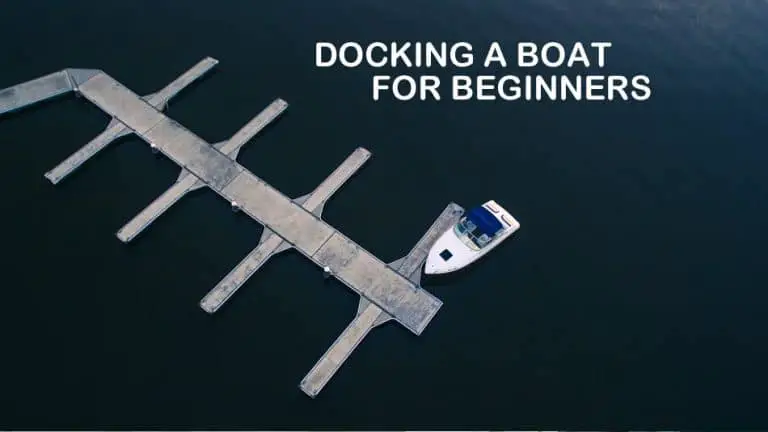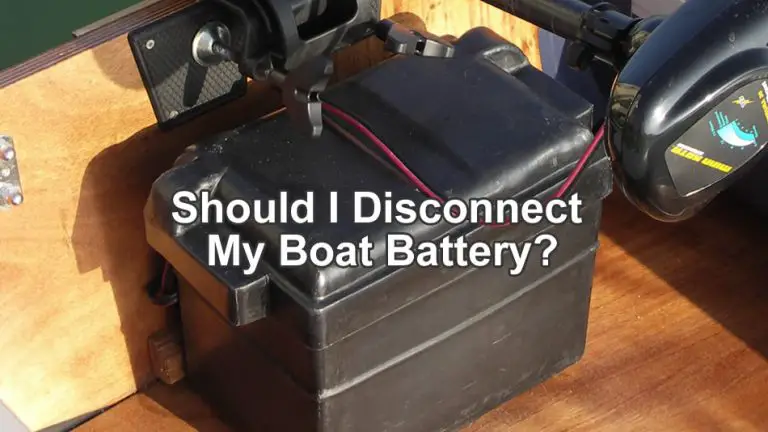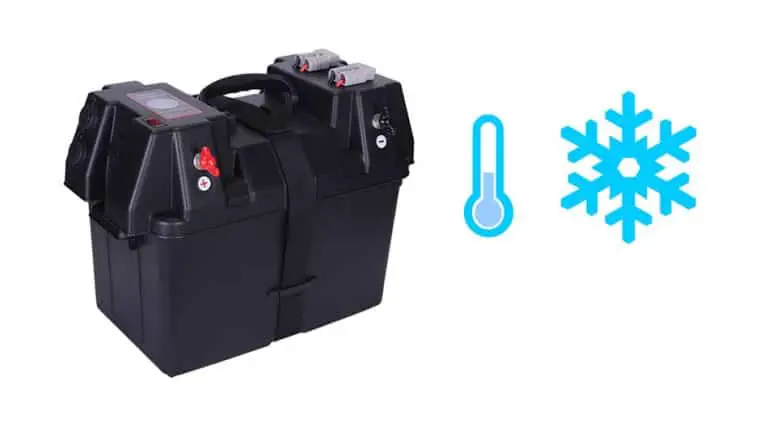How To Get Rid of And Prevent Algae on a Boat
I have to admit; I didn’t know too much about algae until I began researching it. I figured if my son were going to be coming out on the water with me, then I’d better learn more about it and make sure it wasn’t going to be harmful to us.
As it turns out, there are different stages and types of algae, some are harmful to humans and pets, while other stages of algae don’t do any harm. Scientists even have a hard time knowing exactly when algae will begin putting off the harmful toxins.
Take a look below at some of the answers I found while researching this topic.
What is Algae?
The word algae refer to many different types of organisms that are found in both freshwater and seawater. Algae come in a few different colors such as green, red, yellow, blue-green or brown. There are different types of species of algae that vary in size, some are microscopic, unicellular organisms that grow in groups, and other species are much bigger in sizes, such as seaweed or giant kelp.
Algae is an essential part of a healthy marine ecosystem. There’s one type of unicellular, alga (plural for algae) that are known as phytoplankton. Phytoplankton occurs at the surface of the water, where it is exposed to sunlight to survive. Algae is the base of the marine food chain.
Some algae can have the opposite effect and be more damaging than good. A small handful of algae species naturally produce toxins, that are harmful to animals who consume it. When microscopic algae reproduce and accumulate rapidly in one area, this is called a bloom. But when one of the toxic algae species quickly reproduces in this same way, they call that a harmful algal bloom.

A harmful algal bloom can cause significant problems on marine species, which could lead to the deaths of a large number of fish, sea turtles and marine mammals. This toxin could contaminate the seafood we eat and lead to human illnesses. I read somewhere that they have spotted an algal bloom the size of a city, out in the Baltic Ocean, which they are saying is causing a considerable loss of oxygen in the water affecting the sea life in the area.
According to NOAA, only less than one percent of algal blooms produce hazardous toxins. The bigger problem is when the algal blooms grow, they deplete the oxygen in the water and also block out the sunlight from reaching fish and plants. Large algae blooms can last anywhere from a few days to a few months.
Algae typically starts to form in early May and can continue to bloom well into October.
Why is Algae Bad For My Boat?
Aside from algae being visually displeasing, and well, just gross. It does have other adverse effects on your boat.
- Algae will stain your boat if left too long. It makes a green ring that will go around your entire boat. The best thing to do if your boat gets exposed to algae is to remove it from the water and give it a good power washing.
- Sometimes if boats are in waters or marinas that have had a bad algae outbreak, then that boat could be tagged, meaning it is not allowed to go into another lake or body of water until it has been cleaned of all the algae.
- Another problem with algae is that it could occasionally clog up outboard motors. Making it a complete mess to clean out.
- When algae and other bacteria growth attaches itself to your boat hull, it could decrease the vessels performance and maneuverability.
- The increased drag, reducing speed and increases your fuel consumption.
- If left unattended, algae and other bacteria growth could lead to corrosion of the hull and the vessels overall deterioration.
How to Clean Algae-Off an Aluminum Boat?
The longer the algae sits on the aluminum, the more work it’s going to be for you to take it off later. Ideally, if you can power wash it as soon as you get it out of the water then the easier job, you’ll have later removed the tougher stuck on algae. For this, you could use a portable power washer, which can be found on Amazon fairly cheap. Click here to see the current prices. The higher the PSI, the better for blasting off the algae.
But what happens when you’ve left the algae on too long, and it’s dry? Pressure washing alone and scrubbing with a brush won’t get it all off, well it might, but it would be a lot of work and probably take you the better part of the day depending on the size of boat you are doing. There will still be some discoloration that doesn’t want to come off. For this, you’ll need some special cleaner that can help wipe away the algae and give your boat that clean look. Amazon has some different items that could help, such as Captain John’s Boat Brite Algae & Waterline Stain Remover and JJV’s Best BOA100-G Boat Scum Remover to name a few.
Before you go and take your boat out of the water, try using a deck brush and scrubbing the sides of the hull just below and above the waterline. Doing this will help rub off the algae and making it a little easier to remove the rest once the boats out of the water.
Your local boat dealership should also have a product that they would recommend. It’s also a good idea to check with the manufacturer of your boat and see what they would suggest. You want to be careful when using home products because the acids in those products could end up doing more harm than good to the aluminum. Some products could burn a hole in the aluminum, so it’s always worth checking before you use anything.
How Do You Clean The Algae-Off The Boat?
Here are steps I found online that could help you.
- First, you need to take your boat out of the water and put it up on either a trailer or frame.
- Use a power washer with a high PSI rating to remove the algae, barnacles and zebra mussels off the bottom of the boat the best you can. Use a deck brush to help scrub as you go.
- Once you’ve power washed the bottom and removed as many algae, barnacles and zebra mussels as you could, try using one of these two recommended boat cleaning products:
Captain John’s Boat Brite Algae & Waterline Stain Remover and JJV’s Best BOA100-G Boat Scum Remover. Both available on Amazon. - Once finished, take a soft dry cloth and wipe down the area.
You’ll notice a much cleaner look when you are finished.
Algae Can Grow in Tap Water
Filling your fresh water tank with tap water that has been treated with chlorine, can help slow down algae from forming for a limited time. The treatment in tap water doesn’t last forever, and sooner or later algae will begin to grow. The best solution is to use distilled water because the nutrients for algae to grow have already been removed. Since filling your tanks with distilled water would add an extra expense, it’s probably worth just cleaning the tanks with bleach.
How Do You Prevent Algae From Coming Back?
There are a few ways that you can help prevent algae from coming back and attaching it’s self to your boat.
Try This – #1
The first way that I found is that a lot of people bottom paint their hull using an anti-fouling paint, which helps protect the bottom half of the boat from the algae clinging on. Apply two coats for better results. In a freshwater environment, you can expect the paint to last for up to three years. The initial cost to have someone do this professionally for you would range between $1,200 to $2,500 and even higher depending on the type of boat, size, and of course where you take it to get done.
You can choose to paint it yourself and save a substantial amount of money by using a product like TotalBoat Underdog Boat Bottom Paint that you can pick up on Amazon fairly cheap. Before you purchase any, you will need to figure out how much you will need. Most people get away with only needing two cans, but again this depends on the type of boat, and it’s size.
or
Try This – #2
Anti-fouling could be a little pricey, so luckily enough there is a second option, and that is with a product called Aurora Bottom Coat VS721 Protect Boat Bottoms, which can help protect against the attachment of algae, barnacles and zebra mussels. Aside from the cost savings, this product is considered to be one of the top choices for seasonal boaters.
Here are some pros and cons to using VS721
Pros
- Much cheaper than anti-fouling paint
- Comes with UV protection
- Goes on nice and easy
- You can apply to raw aluminum or coat over Alumetron first
- It can last up to 10 years, with a 5-year warranty
- Protects against the attachment of algae, barnacles & zebra mussels
Cons
- If you are to use VS721, you would have to strip off any anti-fouling paint first
- Works better in fresh water, and not so well in salt water environments
- It can scratch and chip if you hit rocks or sand
Can Algae Grow in Your Freshwater Tank on a Boat?
Yes, boats with a built-in freshwater system can have algae growing inside of them. It’s not uncommon for boat owners to complain about having funny-tasting, foul-smelling, or discolored fresh water coming from their freshwater systems. Boats in warmer climates are more prone to this, and especially if the water system is not used very often. Fresh water that is stored in both a fixed plastic or metal tank can grow algae, bacteria and mold, all within a single season.
How Do You Safely Get Rid of Algae From a Freshwater Tank?
Getting rid of algae from a freshwater tank system is something you can do yourself safely, with only a few steps:
- If you can see the algae patches on the inside surface of the water tank, you will want to first remove that before disinfecting. To remove the algae patches, use either a long-handled soft sponge or soft-bristled brush. Do not use a steel brush because this could scratch the interior of the tank.
- Take a bucket and add a three-quarters cup of bleach for every fifteen gallons of water. Use the bucket to make sure to dilute the bleach first before adding it to the tank. You never want to add pure bleach into your water tank without water.
- Leave the water/bleach solution to sit for two to three hours before flushing out the lines. Be sure to include the shower and sinks as well when you are flushing the lines.
- Once the lines are entirely flushed out, fill the tank with clean water, and flush the lines again. You want to repeat a couple of times until you can no longer smell bleach.
It is a good idea to clean and flush out the water tank and lines at the end of the season before you store your boat for a couple of months. I’ve even heard of people who clean and flush everything again before the new season begins just for good measure.
Important reminder: I know I said it before, but make sure you do not pour pure straight bleach into your tank or use on your lines. Bleach needs to be diluted with water first.
Algae and Pets
Algae can pose a health risk to your animals, especially dogs who love to jump out of the boat and swim back to shore. The algae will get stuck to the fur, and later ingested by your dog when they clean their fur. It’s better not to allow your dog to jump into the water, but instead, jump off the boat onto the shore if possible. Dogs who are running and splashing in the water that contains algae could also be breathing it in. Ponds are especially bad places for algae and not a great place for your four-legged friends to play.


